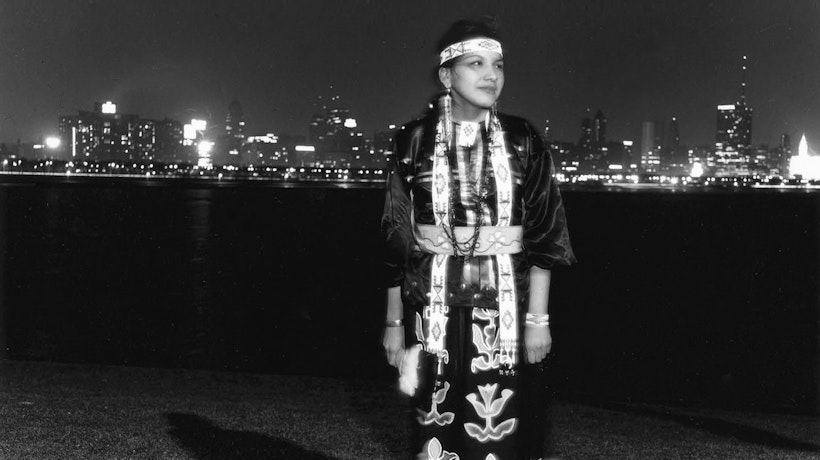
Earlier this year, we summarized the guidelines for Arts and Culture grants from the Richard H. Driehaus Foundation. These grants include general operating support for arts service organizations (Category A grants) and support for programs and projects that align with three sets of criteria (Categories B, C, and D). Category C grants support certain types of festivals and shared creative platforms.
You might wonder what we mean by “shared creative platform,” or by Category C’s five eligibility requirements — all of which must be met before a funding inquiry moves forward. A shared creative platform can be a temporary, permanent, or virtual stage that showcases peer practitioners of an artform, side by side. This could happen annually over one weekend, once a month year-round, or in some other cadence. For participants, the benefits of these programs include networking and creative exchange while, for audiences, fans of one group might be introduced to more like it (and to new friends). Because the Driehaus Arts and Culture program sustains and advances Chicago’s arts infrastructure, building and bolstering its connective tissue, we look for initiatives that bring together a number of otherwise independent entities. These are some ways that an eligible platform cultivates the “robust and diverse creative community” the Arts and Culture program supports.
Category C initiatives should also “shine a spotlight on the collective work of a subset of the Chicago cultural community.” This criterion reinforces the shared aspect outlined above — does the endeavor bring people together? — and speaks also to the Driehaus Foundation’s commitment to inclusion. Festival curators and juries have sometimes been exclusionary gatekeepers. We support inclusive programs that illuminate the breadth and diversity of participation in an artform.
The second eligibility requirement for Category C is the one grantseekers query Foundation staff about most frequently. It asks that the endeavor focus on an artform with Chicago-specific roots; examples include footwork, house music, and Imagist painting. These and other artforms play key roles in Chicago’s cultural landscape, helping the city attract and retain talent and allowing it to foster experimentation and innovation. Although many artforms that satisfy this requirement were “born” in Chicago, some originated elsewhere; the Foundation does welcome inquiries that detail how and why Chicago is now a hotbed for a particular type of creative expression.
The shorthand among Foundation staff for this requirement is the “deep dish test.” Pizza is by no means original or unique to Chicago, but deep dish as a type of pizza is a.) associated specifically with Chicago and b.) more readily available, from a greater number of kitchens, in Chicago than anywhere else. We look at the local presence and vitality of an artform, the number and variety of its local practitioners, and the degree to which it is (or isn’t) prevalent elsewhere. Broadly defined genres like contemporary dance, rock music, and standup comedy are generally ineligible, as are festivals and serial programs mostly attended by an organization’s existing audience and featuring artists on that organization’s own roster.
Guiding questions for grantseekers considering a Category C inquiry include:
- Is Chicago a unique “center of gravity” for current practitioners of this artform? Does the city offer those artists ample opportunities to build their skills, collaborate, and present work?
- Do multiple organizations or venues in Chicago specialize in presenting the artform? Artforms unique to Chicago because they are unique to one local group are likely ineligible.
- Is the artform the curatorial focus of the shared creative platform? If its highest-profile artists or groups — i.e., its headliners — do not satisfy the “deep dish test,” eligibility could be a difficult case to make.
- What percentage of the artists or groups presented by the platform produce expressions of the artform? While many large festivals include a variety of activities, the Foundation prefers that at least three-quarters of a festival’s acts pass the “deep dish test.”
Chicago is a dynamic, multicultural, multiracial city. Just as puppetry has taken root here in a significant, sustained way, diasporic artforms that originated in other parts of the country — or the globe — can satisfy the “deep dish test,” to wit: Pizza is not originally Midwestern, but Mediterranean. Artforms rooted in Indigenous communities native to Illinois and the Great Lakes region are arguably the “deepest dishes” of all.
In a way, this exciting, diverse part of our Arts and Culture portfolio echoes a phrase at the heart of the Foundation’s Built Environment grantmaking: Programs and projects eligible for Category C grants “create a sense of place that reflects an expansive and complex history, and a shared future.”


